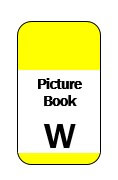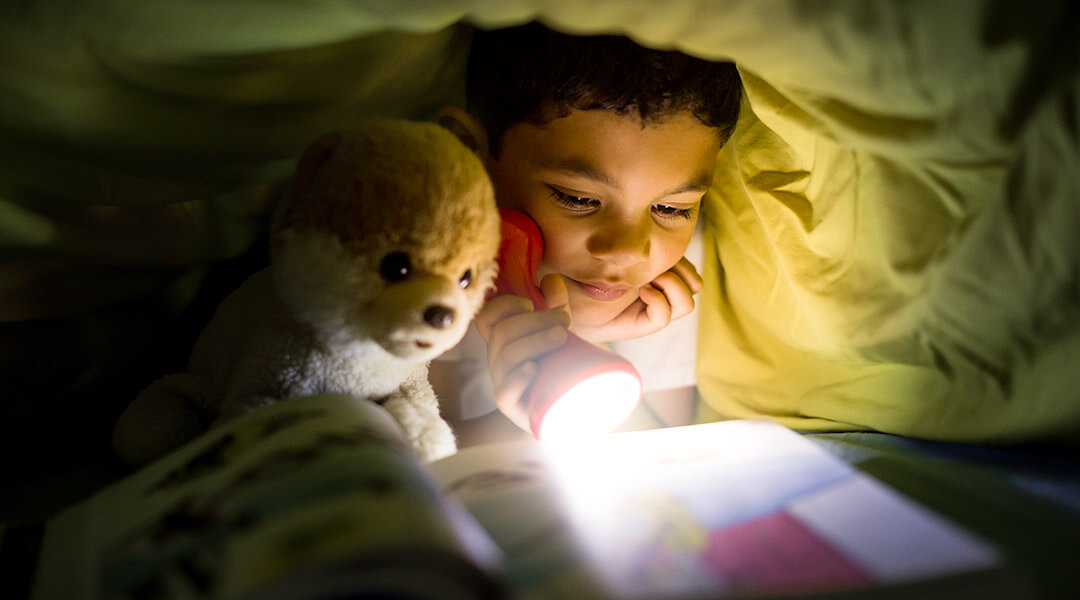One of the most common requests that children’s librarians get is for help finding books for beginning and emerging readers. At Carnegie Library of Pittsburgh, the children’s collections hold books for readers and listeners birth to 11, so there’s a lot to explore.
People looking for books for young children are likely most familiar with Picture Books, which have a yellow spine label. Picture Books are intended to be read aloud by a caregiver. Usually their reading level reflects this—many have challenging vocabulary and complicated sentence structure.

Picture Books are great. They are an important part of building pre-literacy skills. Hearing books read aloud helps to develop rich vocabulary and a full understanding of how language works. But they aren’t good books for beginning readers to use for skill building.
Children learning to read need books with a carefully constructed, limited vocabulary. Lots of repetition and an accessible structure help too. These kinds of books enable them to be successful at reading and practicing their literacy skills.
At Carnegie Library of Pittsburgh, these special books are known as Readers. Many of these books have numbered levels on the spine or cover to help children and parents find the right book for their reading level. Unfortunately, not every publisher uses the same numbering system, so the levels aren’t as helpful as they could be.
The best method of deciding if a book is just right for your beginning reader is to open the book and look at the pages. Most beginning level readers will have a single sentence, or maybe just a few words, on each page. The text is relatively large and there are pictures on every page.
As your child progresses, continue to pay attention to the number of words on the page. You can also check to see if they are words that your child knows. There should be no more than two or three unfamiliar words per page to ensure that your child doesn’t get frustrated.
Some of the most popular Reader series are the Elephant and Piggie books by Mo Willems, A Pig in a Wig books by Emma J. Virjan and the books about Fox by Corey R. Tabor.
For some children who are just learning to read even the simplest Reader may be overwhelming. One way of helping children engage and feel successful in their initial reading experiences is to keep the reading experience fun.
If your child cannot read most of the words on a page, pick one or maybe two words and help them do a word hunt through the book. For example, your child can read “the” and “is” while the adult reads everything else. Make it a game or give a small reward for every “the” and “is” they can find and read.
At Carnegie Library of Pittsburgh, Reader level books can be found in three places. There is a special section called Readers. These have a dark pink spine label.

There are also many Reader level titles in the nonfiction collection. They can be found by looking for books with the traditional size and shape of a Reader (about 9”x6”) and by checking the size of the type and number of words per page.
The final place Readers may be found is in the section called Series. These have a dark blue spine label and include books on a variety of reading levels. This is where books that feature popular characters can be found, like Disney, Lego, Star Wars or Marvel’s Black Panther.

These titles are harder to find in the library’s book catalog but can be found by searching Step into Reading, DK Learning to Read, World of Reading, Scholastic Reader or by searching for those characters and looking for the books with numbered levels.
As children work through the various levels of the Readers, they will eventually move into books that Carnegie Library calls First Chapter books. These are identified with a light green spine label (though you can find this format in Series too).

Like Readers, these books are carefully written with a controlled vocabulary, straightforward plots and limited length, usually 80-120 pages. Occasional pictures help readers to follow the action.
Caregivers may notice that First Chapter books are often written in series, with formulaic plots. Books like this, that have the same characters, same basic situations, and the same basic vocabulary help a child develop fluency by allowing them to read (almost) the same book over and over again. This is a necessary part of reading development.
The best way to help a child develop as a reader is have them spend time reading—20-30 minutes a day at minimum. All reading is good, but don’t forget the value of a child reading aloud to a caring person who can provide help and support if needed.
One fun way to share a book with a child is to take turns reading pages throughout the book. Children get to practice reading while hearing what reading with expression, excitement and fluency sounds like.
Children need to see the adults in their life reading and being excited about books to help them value reading as an enjoyable pastime. There are more suggestions for caregivers to have meaningful reading interactions with beginning and emergent readers at Reading Rockets.org.
Librarians love to help caregivers find the materials they need to support a child’s reading development.
Visit your local library and ask about favorite books for beginning and emergent readers. You can also check out this Staff Picks to see a few of our favorites.
You can sign up for a free library card here. If you are new to our eResources, check out these tutorial videos on how to get started.
Looking for a good book, album, movie or TV show? We’re happy to recommend them to you! Use this Personalized Recommendations form to send us some information about what you like and we’ll curate a list just for you.
If you have any additional questions, you can contact a librarian through Facebook, Instagram or Twitter. You can also call us at 412.622.3114 or email us at info@carnegielibrary.org.

